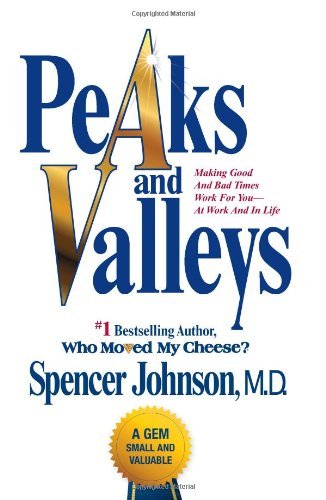
Peaks and Valleys: Making Good And Bad Times Work For You--At Work And In Life
Book Description
Life is a relentless rollercoaster of peaks and valleys, each moment shaping decisions and destinies. In "Peaks and Valleys," Spencer Johnson unveils a powerful blueprint for navigating these highs and lows with resilience and purpose. With gripping insights drawn from real experiences, this transformative guide empowers individuals to thrive in adversity and celebrate success. It’s a journey of self-discovery that reveals the hidden potential in every challenge and joy. Will you conquer your valleys to reach new heights, or will the weight of the lows hold you back? Discover the choice that could change everything.
Quick Book Summary
In "Peaks and Valleys," Spencer Johnson explores the inevitable ups and downs of life and work, offering actionable wisdom on making good times last and bad times manageable. Through a simple story of a young man’s journey across literal peaks and valleys, Johnson illustrates how our responses to events shape our happiness and success. The book suggests that valleys and peaks are not just external events but are often created or prolonged by personal choices and perspectives. By learning how to manage one’s mindset, appreciate success, and utilize difficult times for growth and preparation, readers can find peace, fulfillment, and a sense of control regardless of circumstances. The book offers practical strategies to transform challenges into opportunities and to sustain achievements with humility and gratitude.
Summary of Key Ideas
Table of Contents
Understanding and Accepting Peaks and Valleys
Spencer Johnson begins by framing life as a series of peaks (successes, joys) and valleys (challenges, difficulties) that everyone inevitably experiences. He proposes that accepting this ebb and flow is the first step toward living a balanced and satisfying life. Rather than denying or fearing lows, Johnson suggests embracing them as normal and temporary—just as peaks will also eventually change. Recognizing the cyclical pattern of highs and lows can help manage expectations and reduce the emotional impact of change.
Managing Your Mindset During Highs and Lows
A central idea in the book is that mindset largely determines how one experiences both good and bad times. Johnson explains how people often prolong their valleys by responding with fear, denial, or blame. Conversely, adopting a positive and proactive outlook allows individuals to move through valleys faster and even use them as preparation for future peaks. Mindfulness, self-compassion, and curiosity about what can be learned are essential tools in developing emotional resilience during difficult times.
Turning Valleys Into Learning Opportunities
Johnson emphasizes that valleys are unique opportunities for growth. Rather than avoiding or resenting hard times, he encourages readers to reflect on what they might be teaching us. Asking questions like “What’s the truth in this situation?” and “How can I grow from this challenge?” can transform suffering into valuable learning. Building new skills, repairing relationships, or reevaluating one’s path can all help shorten valleys and set the stage for future successes. Valleys are repositioned as critical periods for creativity and self-discovery rather than just obstacles.
Sustaining Success and Gratitude During Peaks
On the other side, the book warns against complacency during peaks. Success brings its own challenges, such as arrogance or neglecting preparation for the next downturn. Johnson advises celebrating achievements while also practicing gratitude and humility. It's important to use good times to strengthen relationships, plan ahead, and reinforce the values that brought about success in the first place. This forward-thinking attitude helps sustain peaks longer and cushions future valleys.
Choices and Actions That Shape Your Journey
Ultimately, Johnson concludes that the quality of life is determined by choices and actions in response to both highs and lows. While everyone faces peaks and valleys, responding constructively is a matter of deliberate choice. Taking responsibility, learning continuously, and being generous with others during both good and bad times results in greater peace and fulfillment. "Peaks and Valleys" closes with the message that anyone can use both successes and challenges as stepping stones to a richer, more meaningful existence.
Download This Summary
Get a free PDF of this summary instantly — no email required.





